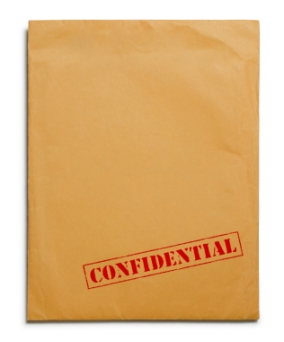When, as here, broad discovery requests lead to relevant documents being mixed in with seemingly irrelevant documents, the fault lies just as much with the party who made the request as with the party who produced documents in response to the request.
District Court Judge Ted Stewart, Cmty. House, Inc. v. City of Boise, 2009 U.S. Dist. LEXIS 49501, 7-8 (D. Idaho June 12, 2009)
Broad discovery requests, discovery produced in the ordinary course of business, and privilege logs fill the story of Cmty. House, Inc. v. City of Boise, 2009 U.S. Dist. LEXIS 49501 (D. Idaho June 12, 2009).
The Discovery Requests & Production
The Plaintiffs made two sets of discovery requests. The Defendants responded to the first request without a written answer, but instead produced 5 boxes of documents and 7 CDs with scans of the documents. Cmty. House, Inc., 1-3. The Defendants claimed the documents were produced as they were kept in the ordinary course of business.
Second Set of Production Requests
 The Plaintiffs made an additional 66 requests for production. The requests included broad, boilerplate language for “any and all” documents across the Defendants’ document universe. Cmty. House, Inc., 3.
The Plaintiffs made an additional 66 requests for production. The requests included broad, boilerplate language for “any and all” documents across the Defendants’ document universe. Cmty. House, Inc., 3.
The Defendants produced 21 boxes of documents. The documents were Bates-stamped and written responses. The Defendants also included an index for each box. Cmty. House, Inc., 3.
The Privilege Log
The Defendants produced a Privilege Log identifying nearly 300 documents. Cmty. House, Inc., 3.
The Privilege Log contained the following information for the claimed privilege documents:
(1) Bates number, where applicable;
(2) The box number in which it would have been contained;
(3) The number of pages in the document;
(4) The date the document was authored;
(5) The author and recipient(s) of the document;
(6) Brief description of the document; and
(7) Claimed privilege.
Cmty. House, Inc., 3-4.
The Plaintiffs’ Attack: Failed Forms of Production & Ineffective Privilege Logs
The Plaintiffs claimed the Defendants’ form of production was not responsive to the Plaintiffs’ requests, because the “Defendants failed to organize the documents produced by either topic or request number.” Cmty. House, Inc., 4.
 The Plaintiffs also alleged unethical conduct, because the “Defendants intentionally hid relevant documents in the middle of unrelated irrelevant documents.” Cmty. House, Inc., 4.
The Plaintiffs also alleged unethical conduct, because the “Defendants intentionally hid relevant documents in the middle of unrelated irrelevant documents.” Cmty. House, Inc., 4.
The Plaintiffs issued a blanket claim the privilege log was insufficient and that the court review ALL of the documents in camera (which would be 26 boxes and 7 CDs). Cmty. House, Inc., 4.
The Document Production: Rule 34(b)(2)
The Plaintiffs argued the production failed because the Defendants did not “organize or provide specific responses” to the requests. Cmty. House, Inc., 5.
The Plaintiffs based their arguments on Federal Rules of Civil Procedure Rule 34(b)(2), which “requires a party to answer a discovery request within thirty days and respond to each item or category.” Cmty. House, Inc., 5.
The Mechanics of Rule 34(b)
Federal Rule of Civil Procedure Rule 34(b)(2)(A) requires a producing party to respond “in writing” to a Rule 34 request. Cmty. House, Inc., 5. The Defendants did respond to the production request, however they did not produce a written response. Id.
Pursuant to Federal Rule of Civil Procedure Rule 34(b)(2)(B), a producing party must state for request whether they are producing responsive documents or objecting. Cmty. House, Inc., 5-6.
The First Request
The Court ordered the Defendants to respond in writing to the Plaintiffs’ request for production. Simply producing 5 boxes of documents without a written response does not meet a producing party’s discovery obligations. Cmty. House, Inc., 5-6. This arguably would not comply with Federal Rule of Civil Procedure Rule 26(g), that a production was “complete and correct as of the time it was made.”
The Second Request
 The Plaintiffs claimed the Defendants engaged in “hide the document” gamesmanship by producing an additional 21 boxes of paper. Cmty. House, Inc.6-7.
The Plaintiffs claimed the Defendants engaged in “hide the document” gamesmanship by producing an additional 21 boxes of paper. Cmty. House, Inc.6-7.
The Court did not agree.
The Plaintiffs requests were a broad net that would catch relevant case documents, but were also likely non-responsive. Cmty. House, Inc. 6-7.
Moreover, considering the Plaintiffs had over 100 broad discovery requests, 26 boxes of documents was not an unreasonable production. Cmty. House, Inc., 7.
Were the Defendants Required to Re-Organize their Productions?
The Court did not require the Defendants to reorganize their production. Cmty. House, Inc., 8-9.
Rule 34(b)(2)(E)(i) states:
A party must produce documents as they are kept in the usual course of business or must organize and label them to correspond to the categories in the request;
The Defendants produced the documents as they were maintained in the ordinary course of business, which is what they were required to do pursuant to Rule 34(b)(2)(E)(i). Additionally, the 21 box production was labeled and organized enough to comply with Rule 34(b)(2)(E)(i). Cmty. House, Inc., 8.
The Privilege Log
 Privilege Logs are defined in Fed. R. Civ. P. 26(b)(5)(A), which requires a privilege log to “describe the nature of the documents . . . in a manner that, without revealing information itself privileged or protected will enable other parties to assess the claim.” Cmty. House, Inc., 9.
Privilege Logs are defined in Fed. R. Civ. P. 26(b)(5)(A), which requires a privilege log to “describe the nature of the documents . . . in a manner that, without revealing information itself privileged or protected will enable other parties to assess the claim.” Cmty. House, Inc., 9.
A party has met their initial burden claiming a privilege once they have complied with the requirements of Fed. R. Civ. P. 26(b)(5)(A). Cmty. House, Inc., 9-10.
The Court held the Defendants’ privilege log was sufficient. Cmty. House, Inc., 10. The privilege log combined with the list of city employees matched with responsibilities, gave the Plaintiffs the able to access whether a privilege attached to any of the documents.
Bow Tie Thoughts
I thought it a little strange that someone would have such a large number of paper documents, given the high use of computers in generating letters, memos and email since the mid 1990s. I can guess the City might have had blue prints or construction documents that might have been never in a digital format, but the facts of the case do not say. Keeping ESI as electronically stored information is cheaper then printing it as paper.
Producing paper documents, such as letters or reports, as paper may drive up discovery costs, because scanning paper to paper incurs a greater cost then scanning paper to TIFF or PDF with searchable text.
Optical Character Recognition (OCR) works only on typed documents (while ATM’s can OCR handwriting on checks, I have not heard of a litigation OCR engine reading handwriting yet). Whether or not these documents were letters, memos or something with typed text is unknown, but OCR-ing the documents would make them “searchable,” depending on the quality of the scans.
